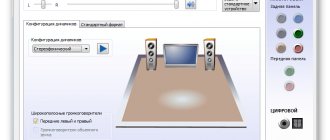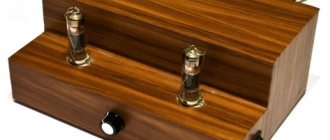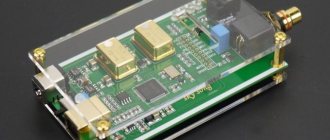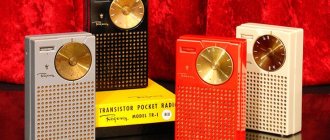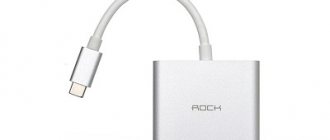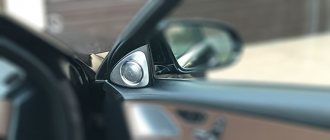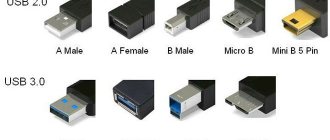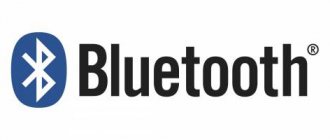In the previous article I talked about working with digital receivers, now it’s time to move on to another exciting activity - connecting these receivers directly to DACs. a description of the DIR9001
as part of a finished DAC, so I will omit this point so as not to repeat it.
I will continue the story with a description of working with the Wolfson Microelectronics product – WM8805 and WM8740.
And also further in the program is a combination of
WM8805 and AD1853 from Analog Devices.
↑ Stereo DAC WM8740 – 24 Bit 192 kHz
Fragment excluded. The full version is available to patrons and full members of the community.
The task of generating the correct output is greatly simplified - less op-amp is needed at the output, less passive. It looks something like this:
Fragment excluded. The full version is available to patrons and full members of the community.
WM8805
converts the SPDIF signal to I2S, which is fed to the corresponding inputs
of the WM8740
. Mode 8805 (from the datasheet): 7 pin – Hardware Mode. In this mode, legs 5 and 8 set the format of the output data, and leg 5 is also a status indicator. A little about the 8740 mode (from the datasheet) 24 pin – Hardware Mode. 23, 28 pins – I2S 24bit. 26, 27 pins – Deemphasis OFF. All these modes can be selected in any order - without rebooting the chip. But I decided to go with this option. 21 legs – “zero detect”. When 1024 “zero” samples arrive at the DAC input, the signal at this pin goes into log 0 state - the LED lights up. This circuit can be used to turn off outputs during pauses. In reality, no interference or noise was noticed, so only an indication is displayed. By the way, this is the only DAC I have used where “zero detect” is inverted by default. For other DACs, this is the output of a logical unit in the active state.
The output adder is on one dual op-amp, then a buffer op-amp for headphones. Capacitors C30 and C31 were included in case of constant operation at the output of the adder - then they were thrown out.
PSU diagram and description
are given in the article “Crafts for a beginner circuit builder. Part 6. Modernization!”, but in principle, for the devices to operate, they require +/-18-20V for “analog” and +5 (stabilized) to power the receiver and the digital part of the DAC. The last preparations before installing the microcircuits are checking for the absence of “snot” and the operation of stabilizers.
We solder the microcircuits and get started!
Oddly enough, everything even started, no smoke came out... All that remains is to coordinate the formats on the hardware by selecting the WM8805
. At the same time, figure out how the display works.
It turns out that the entire display is based on the “logical or” principle. One LED is enough.
The duet of the two “wolf cubs” turned out to be quite good.
Of course it's not a PSM1796, but the sound is good. Replacing the op-amp in the adder does not have much effect on the sound, apparently it affects the Kg of the OPA544
, which is quite high at low powers. In principle, it’s quite usable!
While listening to WM8740
, let's think about where to use another
WM8805
.
As I already said, DAC and DIR are different things, and they can be friends with each other in almost any order. Therefore, we are trying something cooler - AD1853
.
Well, unlike the WM8740
, there are legends about
the AD1853
, and, as always, they are so different that sometimes it is difficult to understand who is telling the truth and who is telling fairy tales. There is only one thing left to do - test it in practice.
↑ DAC AD1853 – 24 Bit 192 kHz
We draw a diagram, checking the datasheet.
Fragment excluded. The full version is available to patrons and full members of the community.
From the datasheet we also take the “exhaust” - I/U and LPF.
We screw the WM8805
in front as a receiver.
AD1853
operating mode is clearly not divided into Hard and Soft. It just starts with the default parameters, and if SPI control is not required, then legs 3, 4, 5 are recommended to be grounded. Several other modes are available - legs 20 and 21 select the input data format. The 6th and 7th legs control 2, 4 and 8 times oversampling of the input data. Ambiguous result from listening with different meanings.
Fragment excluded. The full version is available to patrons and full members of the community.
Now let's fill the board and check the operation of the stabilizers. I carry out this procedure before soldering the microcircuits, so as not to accidentally burn them.
Now all that remains is to solder the chips and start everything together.
The board does not have the OPA547
, which were still on the way at the time of assembly.
Here I had to tinker with the coordination of the format of
WM8805
and
AD1853
, but in the end everything worked.
The diagram shows the current position of the jumpers. On the board, the “snot” is simply hung on the desired leg under the support resistor. Well, the first, and the second and third impressions are positive! The sound is certainly pleasant, different op amps can be heard very well, and here the BB lost to the AD. The AD823
turned out to be the best available.
Well, the final touch is the installation of
OPA547
.
The structure is now completely completed.
It is almost useless to say anything about sound, especially to compare two devices of different classes.
As I probably already said, I like the current output more, since it gives me the opportunity to play with the op-amp at the output, choosing the best option to suit my preferences. with the WM8740
... Well,
the AD1853
showed itself to be very good.
Phiree D1 DAC on Wolfson wm8741 (added)
This DAC, based on the popular Wolfson wm8741 chip at that time, first appeared in electronic stores in 2013-2014, where it received a number of positive reviews abroad in the spirit of “oh my goodness, it beat my wonderful DVD player to smithereens!” On average, its price was around $160.
The Wolfson wm8741 chip, as a digital-to-analog converter, showed an interesting thick, although a little muddy, sound with beautiful natural after-sounds and was installed in DACs or amplifiers from Rega, Nad, Cambridge Audio, Arcam, etc.
Rega DAC on wm8742
Its direct competitor at that time was the Cirrus Logic CS4398 DAC.
If you suddenly wonder why all devices based on Wolfson wm8741 chips systematically disappeared from sale, like dinosaurs, from 2014 to the present day, if there were many fans, then the answer to this question lies in the same 2014.
Cirrus Logic has acquired audio chip developer Wolfson Microelectronics.
Cirrus Logic bought a competitor, and of course it is not in its interests to continue their line - at most to borrow some successful developments.
That’s why today we see a rather limited choice of chips on the market - usually it’s either Saber or Asahi Kasei, and occasionally Cyrus Logic CS4398, mainly thanks to Marantz.
Marantz HD-DAC1 (CS4398)
The fairly successful budget model Cambridge Audio DacMagic plus on the wm8740 prevents the Wolfson wm874x from completely disappearing from the market. And by the way, for budget models, where atomic resolution of musical material does not exist, this is a very plausible solution.
Cambridge Audio DacMagic Plus DAC on Cirrus Logic WM8740 chip
But budget branded solutions imply budget not only in the lower cost of the chip, but also the harness. Therefore, I was interested in a rare model that is still sold in China, the Phiree D1.
The Phiree D1 is based on the Wolfson wm8741 digital-to-analog converter, but I was especially attracted by the rest of the more than decent hardware.
The operational amplifiers in the harness are two luxurious devices from the Analog Device AD797, which have proven themselves very well in modern devices.
An excellent chip with jitter less than 50 pixels is responsible for SPDIF - Wolfson wm8805, which receives digital data with characteristics up to 192 kHz 24 bit.
And for USB, the answer is also an excellent-sounding, and familiar to me from the XiangSheng DA-03a DAC, TE7022 chip (96 kHz 24 bit).
Nichikon capacitors and other nice bonuses, plus the ability to connect a high-quality external linear power supply should affect the sound quality.
In total, the Wolfson wm8741 can refine the sound with thick and rich overtones, and the AD797 operational amplifiers can bring modern clarity and sound accuracy, and very decent SPDIF and USB transports should also contribute to this.
I couldn't resist and bought such a rare DAC as the Phiree D1.
APPEARANCE
From the photographs I imagined the Phiree D1 to be larger in size. In reality, its size is approximately similar to the size of the Chinese SU2 DAC, even slightly smaller in height. But considering that SU2 already contains a linear power supply, and Phiree D1 has an external power supply, the dimensions are logically clear.
The body is aluminum, made in China with standard quality.
The RCA connectors are located - red at the bottom, white at the top. The red one is attached tightly, and the white one goes deeper if you try to connect a cable that is tight enough. I had to change the cable to a simpler one because I think if you overdo it, you can damage the connector.
LISTENING
The DAC sounds musical, as expected; for this purpose, behind the main instruments there is always a certain sound substrate that makes the sound more comfortable. The sound of instruments and vocals is certainly recognizable. There is a certain simplicity in the presentation of the texture of the music, all sounds are simplified, but the musical background does its job and is quite pleasant to listen to. The detailing is also quite high, but the sounds themselves are simplified.
For comparison, I turned on the Lite DAC-AH DAC on the 8x TDA1543, which, however, costs 2 times more, and my feelings were confirmed. The Lite DAC-AH sounds clearly clearer, musical objects are firmly drawn in their places, and there is a cosmic emptiness between them, which gives a strong feeling of three-dimensional sound.
When switching to the Phiree D1, a rear musical background appears, which, of course, eliminates the vacuum between the instruments, and we get, figuratively speaking, a swaying jelly with a slightly simplified sound.
He cannot be an example of delicacy, and in vocal jazz you will probably hear that a number of characteristic moments have been simplified and some of the richness of tones has degenerated into sibilance, but nevertheless the sound substrate smooths out all this, giving you melomania in its purest form. As for simpler genres in terms of timbre richness - electronics and similar ones - then such nuances do not arise here.
I didn’t notice the expected density of Wolfson sound in this DAC, just as there is no thin sound here - the balance is very even.
It is also worth noting that the Phiree D1 was auditioned on a stock power supply and connecting a normal linear power supply will certainly have a beneficial effect on the overall sound.
The result is a DAC that sounds beautiful and musical, but the texture of the sound is blurred and simplified, and the substrate underneath the sounds creates a sense of musicality. Considering its low price, the Phiree D1 DAC seemed very pleasant to me, although it cannot compete with the Lite DAC-AH DAC.
You can listen to the sound video of the Phiree D1 below.
CONTINUATION
It would seem that all the dots were in place, but suddenly my remote control received a message from another galaxy, where it was reported that researchers had opened the Phiree D1 case and found inside something completely different from what was expected.
Concerned by this moment, I took up a screwdriver and a new picture opened up to my eyes.
Instead of the chips declared by the seller from Aliexpress, the filling turned out to be clearly different and significantly cheaper.
The same hero seller of the Music KTV Electronic Store, whom I had avoided before because of his bad trait. He took well-known DAC models, about which everyone knew that there were good op-amps and other components, and quietly replaced them with 8-ruble Chinese NE5534, and simply deleted the text about the op-amps contained inside - like he didn’t know what was inside. The price was either slightly cheaper or similar.
But in this case, he especially emphasized that the main feature of the Phiree D1 is the expensive operational amplifiers AD797, USB TE7022 and the Wolfson wm8740 chip.
Here's a copy-paste from the lot description:
Main chip: TE7022 + WM8805 + WM8741 + 2 * AD797
and:
WM8741 voice advantage: regardless of speaker, detail, sound field, expansion, sweet tone, open field, wide dynamic range.
Now let's see what's really inside:
Oh yes, the 8 ruble NE5534 is loved by the Music KTV freeloader and allows you to fool people easily and naturally.
And here, in reality, the newer wm8741 chip disappeared, giving way to the older wm8740. Yes, the only difference there is in the support of high-quality formats, for example wm8742 supports DSD directly (direct), without conversion to PCM, and wm8740 is not aware of the existence of DSD at all.
And here we see that instead of the TE7022 USB transport we know by its sound, we see Bravo, ala ES9023. I can’t say that it is worse or better, maybe even better - you need to listen and compare, but the fact is that the filling is simply completely different from that indicated in the lot!
TOTAL
Deceived Music KTV - no doubt. Would I advise anyone not to contact him - of course. He will cheat not in this, but in another, it is dishonest. You can decide that he didn’t know, didn’t know what he was selling, but based on his specifics, selling everything with cheaper NE5532/4 increasing profits, then “I don’t believe it.”
The second question is that the covers have been torn off and it turned out that the filling of the Phiree D1 is not as good as it should be, what is the conclusion from this?
And the conclusion is that even in such a defective configuration, the DAC did not sound worse than described above. Even the money that I already paid for it is worth it and I don’t regret it. On the other hand, the potential of the DAC opens up, due to the fact that, as it turns out, you can still install really high-quality AD797 op-amps into it, connect a linear power supply and get even better sound - this is nice.
As for the deceiver Music KTV, we will punish with money, for one thing we will find out what the diamond status on aliexpress is worth.
